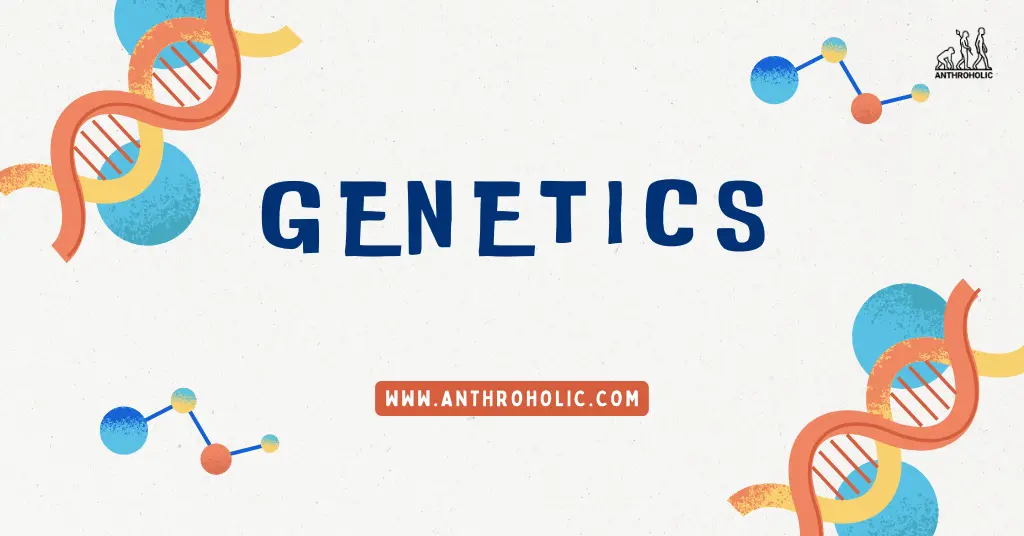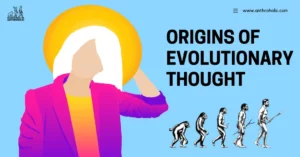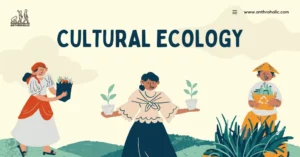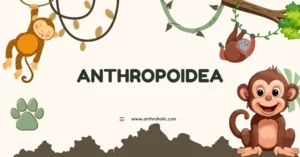AI Answer Evaluation Platform Live Now. Try Free Answer Evaluation Now
Genetics
Genetics is a branch of biology that studies genes, genetic variation, and heredity in organisms. When these anthropology and genetics intersect, we get anthropological genetics, a field of study that uses the methods and theories of genetics to answer questions about human history, adaptation, diversity, and disease susceptibility [1]. This sub-discipline seeks to understand how human genetic material has been shaped by factors such as evolution, migration, and social structure.

Relevance of Genetic Studies in Anthropology
The relevance of genetic studies in anthropology is multifold. Genetic research can shed light on human evolution, helping us understand how humans have adapted to different environments over time. By comparing the genetic makeup of various populations, researchers can trace migration patterns and interbreeding events that have shaped our species.
Genetics also plays a significant role in understanding human diversity. By studying genetic variations, anthropologists can explore how different cultures and societies have been shaped by their unique genetic histories. For instance, certain genetic traits are closely tied to specific geographic regions or ethnic groups, and their distribution can offer insights into population history and cultural practices [2].
Moreover, genetic studies have practical applications in understanding human health and disease. Some populations are more susceptible to certain diseases due to their unique genetic makeup. Understanding these genetic susceptibilities can provide valuable information for public health initiatives and personalized medicine.
Lastly, genetic studies have ethical implications in anthropology. Issues of privacy, informed consent, and the use of genetic data are central to the field. These ethical considerations are crucial for maintaining the integrity of anthropological research and for ensuring the fair and respectful treatment of study populations.
The Role of DNA, Genes, and Chromosomes
- DNA: Deoxyribonucleic acid (DNA) is a long, double-stranded molecule that encodes the genetic information necessary for the development, functioning, and reproduction of organisms. Comprised of nucleotides — each of which contains a sugar, a phosphate group, and one of four bases (adenine, cytosine, guanine, thymine) — DNA uses this base-pair sequence as a blueprint to guide an organism’s growth and biological functions.
- Genes: Genes are specific sequences of nucleotides in DNA that serve as the fundamental physical and functional units of heredity. Each gene contains the instructions for building specific proteins, which are vital for body structure and function. Changes or mutations in these sequences can affect the structure and function of the proteins, thus affecting an organism’s traits (phenotypes). Humans have around 20,000-25,000 genes, each playing a crucial role in our growth, development, and health.
- Chromosomes: A chromosome is a long DNA molecule with part or all of the genetic material of an organism. Humans have 46 chromosomes in each cell, organized into 23 pairs. One pair, the sex chromosomes, are either X or Y and determine a person’s sex. The remaining 22 pairs, called autosomes, are numbered by size. Each chromosome carries hundreds to thousands of genes with specific locations along its length.
Genetic Variation and Evolution
- Genetic Variation: Genetic variation is the difference in DNA sequences between individuals within a population. It originates from mutations, which are changes in DNA sequences, genetic recombination during sexual reproduction, and migration between populations (gene flow). Genetic variation is the basis for phenotypic variation — the observable differences in the appearance and behavior of individuals [3].
- Evolution: Evolution refers to changes in the genetic composition of a population over time. It is driven by natural selection, genetic drift, mutation, and gene flow. In the process of natural selection, traits that enhance survival and reproduction become more common in succeeding generations. Genetic drift, in contrast, is the change in the frequency of a gene variant (allele) in a population due to random sampling and chance events. Gene flow involves the transfer of genetic diversity from one population to another. All these mechanisms can lead to the formation of new species, or speciation.
Inheritance Patterns
- Inheritance patterns describe how genetic traits and diseases are passed from parents to offspring. They provide insights into the likelihood of an individual inheriting and expressing certain genetic conditions.
- Mendelian inheritance refers to the patterns of inheritance that are characteristic of organisms that reproduce sexually. These include autosomal dominant inheritance (where a single copy of a disease allele is sufficient to produce a disease), autosomal recessive inheritance (where two copies of a disease allele are required to manifest a disease), and X-linked inheritance (where the gene causing the disease is located on the X chromosome).
- Non-Mendelian inheritance includes multiple types of inheritance patterns that don’t follow the simple dominant/recessive scheme of Mendelian inheritance. This can include incomplete dominance (where the resulting phenotype is a blend of the parental traits), codominance (where both alleles are fully expressed), and polygenic inheritance (where a trait is governed by two or more genes) [4].
Prehistoric Genetic Traces and Anthropology
Prehistoric genetic traces, deciphered through the complex field of ancient DNA (aDNA) analysis, have offered anthropologists a time portal into our species’ past. This technology allows scientists to extract and sequence DNA from ancient remains, enabling a genetic overview of prehistoric populations [5].
The application of mitochondrial DNA (mtDNA) analysis has been particularly illuminating. mtDNA is passed down through the maternal line with little to no recombination, acting as a molecular clock. Using this, researchers have traced back human lineages to a single female ancestor, the Mitochondrial Eve. This finding suggests that all modern humans are descendants from a small population that lived in Africa around 200,000 years ago, reinforcing the Out-of-Africa hypothesis of modern human origins [6].
Similarly, studies on the Y chromosome, which is passed down the paternal line, led to the discovery of the Y-chromosomal Adam. This common paternal ancestor lived approximately 200,000 to 300,000 years ago. Like the mtDNA studies, this work offers key insights into human migration and population structure throughout prehistory.
The Neolithic Revolution and Genetic Shifts
The Neolithic Revolution, which began around 10,000 BCE, marks a pivotal point in human history. The transition from nomadic hunter-gatherer lifestyles to settled farming drastically transformed human societies, economies, and genetics.
As people settled and began cultivating crops and domesticating animals, human populations became denser. These changes in social structure and lifestyle significantly influenced human genetics. An example of this is the lactase persistence mutation, which allows the digestion of lactose in adulthood. This trait offered a significant advantage in societies that domesticated milk-producing animals and thus spread rapidly through certain populations in a process known as gene-culture co-evolution.
The Impact of Migration and Admixture on Human Genetics
Migration and admixture (interbreeding between distinct populations) have been fundamental to shaping human genetic diversity. As our ancestors moved out of Africa and into different parts of the world, they met and interbred with other hominid species they encountered, including Neanderthals and Denisovans [7].
These interbreeding events left a significant imprint on our genome. Modern non-African humans retain around 1-2% Neanderthal DNA in their genome, indicating extensive admixture between our species. This shared DNA affects various traits and disease susceptibilities in contemporary humans.
Migration has also resulted in the “founder effect,” where new populations established by a small number of individuals exhibit less genetic variation. The genetic makeup of the founding individuals heavily influences the genetic profile of subsequent generations. This often leads to an increased frequency of certain traits and genetic disorders.
Genetics and Physical Anthropology
Physical anthropology, also known as biological anthropology, aims to study human evolution and biological diversity. In recent years, advancements in genetic research have considerably enhanced our understanding in this field. These genetic insights provide a more nuanced understanding of our species’ evolution and the biological basis of human variation.
- The Role of Genetics in Human Variation and Adaptation
Genetics plays a crucial role in explaining the remarkable range of human variation. From physical characteristics like skin color and height to the ability to resist diseases, much of the human diversity we observe is influenced by our genes. In certain cases, such as skin color, the genetic basis is polygenic, meaning multiple genes contribute to the final phenotype.
In the context of adaptation, genetic variants that offer survival advantages in specific environments can become more common through natural selection. For instance, the genetic adaptation to high-altitude environments seen in Tibetan populations, where a variant of the EPAS1 gene helps cope with low oxygen levels, is a compelling example of such an adaptation.
- Evolutionary Genetics and Hominid Evolution
Evolutionary genetics, which integrates the principles of genetics and evolutionary biology, has reshaped our understanding of hominid evolution. For example, it has allowed scientists to construct a “family tree” of hominids based on genetic similarities and differences. It has also revealed the timing of divergences between different lineages, such as between humans and our closest living relatives, the chimpanzees.
- Case Study: Genetic Insights into Modern Human’s Relationship with Neanderthals and Denisovans
Genetic studies have dramatically altered our understanding of the relationship between modern humans, Neanderthals, and Denisovans. Earlier, based on fossil evidence, these groups were thought to be entirely separate species. However, genomic studies have shown that modern humans share a small percentage of their DNA with both Neanderthals and Denisovans, suggesting interbreeding events between these groups [8].
This interbreeding has left a lasting legacy on our genome. For example, some populations today have inherited Neanderthal DNA variants that influence traits such as skin and hair characteristics, and immune response.
Genetics and Cultural Anthropology
Cultural anthropology traditionally focuses on societal and cultural aspects of human populations, while genetic anthropology looks at biological diversity. However, these two sub-disciplines are not mutually exclusive. The cultural practices of different groups can have significant impacts on their genetic makeups, creating a bridge between cultural and genetic anthropology.
- Cultural Practices and Genetic Drift: Genetic drift, a mechanism of evolution that involves changes in allele frequencies in a population over generations, can be influenced by cultural practices. Certain societies have marriage systems that restrict partner choice to specific groups or clans, thus limiting the pool of potential mates. This limited gene flow can lead to genetic drift, altering the frequency of certain genetic traits in these populations.
- Impact of Agriculture, Sedentism, and Urbanization on Human Genetics: The development of agriculture, leading to sedentism and eventually urbanization, has had considerable impacts on human genetic diversity. The shift from hunting-gathering to agriculture brought about dietary changes which put new selective pressures on human populations. This is exemplified by the spread of the lactase persistence trait among populations with a long history of dairy farming.
- Urbanization, by enabling larger and denser populations, increased the opportunity for both communicable diseases and genetic exchanges among groups, influencing the genetic diversity of urban populations. The advent of cities also likely intensified social stratification, which could impact gene flow within a population.
- Genetic Anthropology of Indigenous and Isolated Populations: Studying indigenous and isolated populations can offer unique insights into human genetics. Due to their relative isolation, these groups often exhibit unique genetic traits and have less genetic diversity compared to larger or more connected populations.
For instance, the Indigenous peoples of the Andaman Islands show a direct genetic lineage to the first out-of-Africa human migrations, providing valuable information about early human dispersals [9]. Similarly, studies on the Ashkenazi Jewish population, which has been relatively isolated due to cultural and historical factors, have shed light on the effects of genetic drift and founder effects on genetic diseases.
Ethnogenetics: Ethnicity and Genetics
Ethnogenetics seeks to understand the relationship between genetics and ethnicity, providing insights into human history, migration, and health disparities. While ethnicity is traditionally defined by shared cultural, historical, and social experiences, genetics can contribute to a more nuanced understanding of ethnic affiliations and disparities.
- Defining Ethnicity in Genetic Terms
Defining ethnicity in genetic terms is complex, largely due to the fact that genetic variation is typically continuous and does not neatly align with ethnic labels. However, genetic studies can often detect patterns of variation that correlate with geographical origin or shared ancestry, which can often align with certain ethnic groups.
It’s important to note that while genetic factors may correlate with certain ethnicities, ethnicity is also a social construct that encompasses more than just biological heritage. Cultural, linguistic, and historical ties, as well as self-identification, are crucial components of ethnic identity.
- Genetics and Ethnic Health Disparities
Genetic factors can play a role in health disparities observed between different ethnic groups. For example, the higher prevalence of hypertension in African Americans compared to other U.S. populations has been linked to genetic variations that influence salt sensitivity and kidney function.
However, it’s essential to understand that these disparities are also heavily influenced by social, economic, and environmental factors, which often have a more substantial impact on health outcomes than genetics alone.
- Case Study: A Deep Dive into the Genetic Diversity of a Specific Ethnic Group
Taking Ashkenazi Jews as a specific ethnic group, we see that they provide a fascinating case study for ethnogenetics. This group has a relatively recent common ancestry and has been subject to numerous population bottlenecks, leading to a unique genetic profile.
Certain genetic diseases, such as Tay-Sachs disease and familial dysautonomia, are more common in Ashkenazi Jews, likely due to founder effects where certain disease alleles became more common in the population due to genetic drift.
At the same time, the study of this group’s genetics has provided insights into broader human history, such as the impact of medieval migrations and the genetic legacy of the Khazars.
Advances in Genomic Technologies and their Impact on Anthropology
The advent of genomic technologies has revolutionized anthropological research, shedding light on human evolution, migration, and population structure. High-throughput sequencing, also known as next-generation sequencing, allows for rapid and cost-effective sequencing of entire genomes, providing a comprehensive view of an individual’s genetic makeup.
These technologies have allowed researchers to extract and sequence ancient DNA from archaeological samples, providing direct genetic evidence of our ancestors and allowing us to trace human migration patterns more accurately. For example, the sequencing of the Neanderthal genome has deepened our understanding of early human history, revealing interbreeding events between Neanderthals and the ancestors of modern humans.
Personal Genomics and Anthropology
Personal genomics, a branch of genomics where individuals can have their genomes sequenced and analyzed, has opened new avenues in anthropology. These services can provide insights into an individual’s ancestry, leading to a greater interest in genetic genealogy.
However, the use of genetic data for determining ancestry has its complexities and limitations. While it can provide a broad geographical context of an individual’s heritage, it might not reflect their cultural identity or recent ancestry. Moreover, the lack of representation of certain global populations in genetic databases can skew ancestry results, calling for more inclusivity in genetic research.
Prospective Areas of Study in Anthropological Genetics
As genomic technologies continue to advance, new areas of study in anthropological genetics emerge. One such area is the study of epigenetics – changes in gene activity that do not involve alterations to the genetic code but still get passed down to at least one successive generation.
Epigenetic modifications can be influenced by environmental factors, and studying these could provide insights into how different environments have influenced human evolution.
Moreover, the study of microbiomes, the communities of microorganisms that live on and within us, in an anthropological context, holds promise. Understanding the interplay between our genetics, our microbiomes, and our environments could shed light on human health, diet, and evolution.
References
[1] Crawford, M. H. (2007). Anthropological Genetics: Theory, Methods and Applications. Cambridge: Cambridge University Press. https://www.researchgate.net/publication/246161298_Book_Review_Anthropological_Genetics_Theory_Methods_and_Applications
[2] Jorde, L. B., & Wooding, S. P. (2004). Genetic variation, classification and ‘race’. Nature Genetics, 36(S11), S28-S33.
[3] Futuyma, D. J., & Kirkpatrick, M. (2017). Evolution (4th ed.). Sinauer Associates, Inc.
[4] Strachan, T., & Read, A. (2019). Human Molecular Genetics (5th ed.). Garland Science.
[5] Pääbo, S. (2014). Neanderthal Man: In Search of Lost Genomes. Basic Books.
[6] Cann, R. L., Stoneking, M., & Wilson, A. C. (1987). Mitochondrial DNA and human evolution. Nature, 325(6099), 31-36.
[7] Green, R. E., Krause, J., Briggs, A. W., Maricic, T., Stenzel, U., Kircher, M., … & Pääbo, S. (2010). A draft sequence of the Neandertal genome. Science, 328(5979), 710-722.
[9] Meyer, M., Kircher, M., Gansauge, M. T., Li, H., Racimo, F., Mallick, S., … & Pääbo, S. (2012). A high-coverage genome sequence from an archaic Denisovan individual. Science, 338(6104), 222-226.




